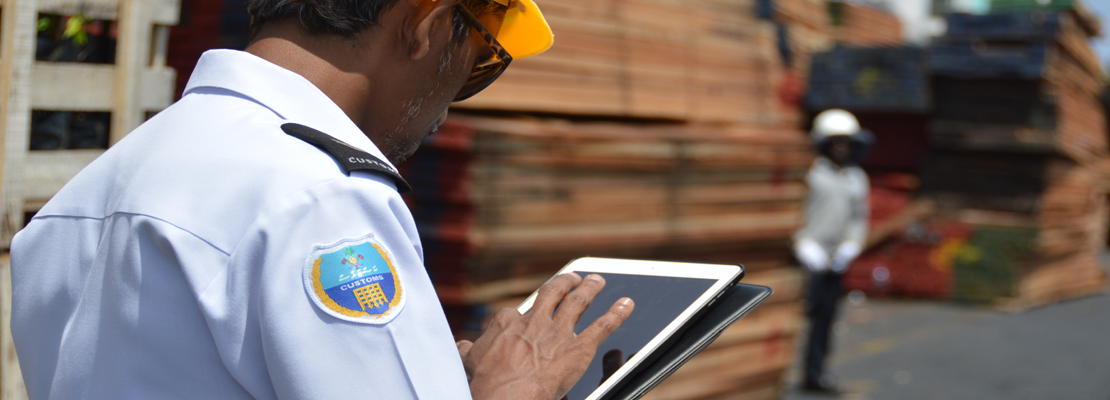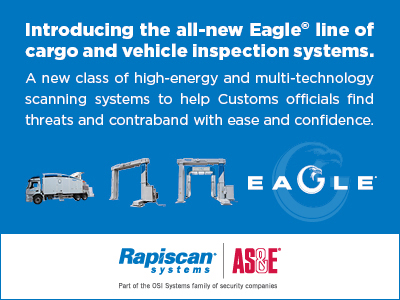Towards technology-driven organizations
6 June 2019
By Kunio Mikuriya, WCO Secretary GeneralAs Secretary General of the WCO, I am reminded, every time I visit a Customs administration and its facilities, of the various technologies used by WCO Members to improve the way they manage the flow of goods, people and means of transport, enabling them to not only meet the challenges, but also take advantage of the opportunities, presented by the 21st century border and trade environment.
There is nothing new in saying that leveraging technology is key, and there is no shortage of articles or research and analysis on why and how Customs is or should be implementing information and communication technologies (ICT). Among recent WCO contributions is the “Study Report on Disruptive Technologies,” which aims to raise awareness of these latest technologies and their potential, by demystifying each of them individually.
The WCO has also developed several IT tools, which have been placed at the disposal of its Members. There is the National Customs Enforcement Network (nCEN) application, which gives Customs administrations the ability to collect, store, analyse and disseminate law enforcement information more efficiently at the national level, in order to establish robust intelligence capabilities and enhance profiling.
Another tool which comes to mind is the WCO Cargo Targeting System (CTS), which enables Customs to capture air and maritime cargo manifest data in an electronic format and analyse the collected data in order to identify high-risk shipments at import, export and transhipment across the full range of Customs threats.
I should also mention that the WCO fully supports its Members in the deployment of the Global Travel Assessment System (GTAS), a passenger targeting system that was donated to the WCO and which continues to be supported by US Customs and Border Protection. The GTAS is made available free of charge to WCO Members seeking to collect and explore passenger data, be it advance passenger information (API) or passenger name record (PNR) data.
The WCO has also developed critical standards-supporting IT tools such as the WCO Data Model for the harmonization of electronic data requirements, the Unified X-ray File Format (UFF) for the harmonization of data generated by non-intrusive inspection devices, and standards for the electronic exchange of passenger related information.
Last but not least, the WCO, has, over the years, produced a lot of guidance material related to the implementation of technologies, including the ICT Guidelines to help administrations implement the Standards and Recommended Practices contained in the Revised Kyoto Convention, the Single Window Guidelines, and the Guidelines for the Procurement and Deployment of Scanning/NII Equipment that have very recently been updated.
For this edition of the magazine’s dossier, we invited some Customs administrations to share information on their initiatives related to technology. The idea being, as always, to highlight any challenges faced, to showcase those projects that will inspire others, and, of course, to communicate best practices.
Let me now turn to the actual content of the dossier. It starts with an article by Jamaica Customs, which explains how it began a journey towards full automation in 2015 that enabled the administration to build a strong partnership with other border agencies, affording new opportunities for integration and cooperation to facilitate and enhance trade.
It is followed by an article by US Customs and Border Protection on the use of biometric technology to monitor the movement of travellers exiting the United States, a task that authorities have been wrestling with for years. Technology was part of the problem, but how to integrate it into existing infrastructure at airports without driving up costs and negatively impacting airport and airline operations was a conundrum.
In an article by Indian Customs, they explain how they are using electronic sealing devices, a move that enabled the administration to reduce the risk of fraud at exports and at transit, while extending higher levels of facilitation to cross-border traders and strengthening regional integration.
The article by Cameroun Customs sheds light on how the implementation of the systematic scanning of containers at the port of Douala impacted clearance procedures, looking into the efficiency of the system, how it is perceived by trade operators, and the various issues and criticisms it raised.
The WCO Secretariat also contributed to this issue. A first article gives an update on the development of the UFF. Here, I am pleased to announce that the technical specification of this standard has been approved and will be submitted to the WCO Council in June 2019 for endorsement. WCO Members wishing to deploy the UFF in their operations should include such a requirement in their tender documents for the procurement of NII systems.
A second article looks at the potential uses of geodata for border management, arguing that Customs could, by generating geodata on their fields of interest (borders, trade, transport, logistics, taxation, corruption) and using the right tools, be in a better position to strengthen their border management role, both to secure and facilitate cross-border economic activities.
In wrapping up, I would like to sincerely thank all the contributors to this dossier, as well as all the other contributors to the magazine who took the time to share their experiences with us on various Customs and international trade issues. It has been our pleasure to produce another edition of the magazine, and we trust that you will enjoy reading all the insightful articles.

